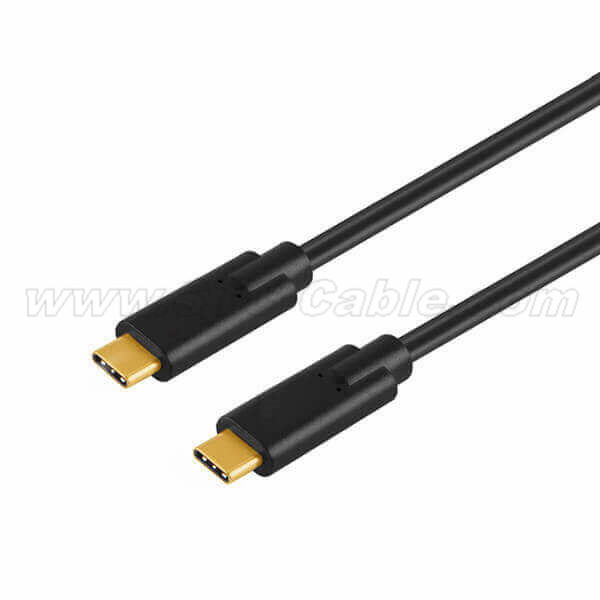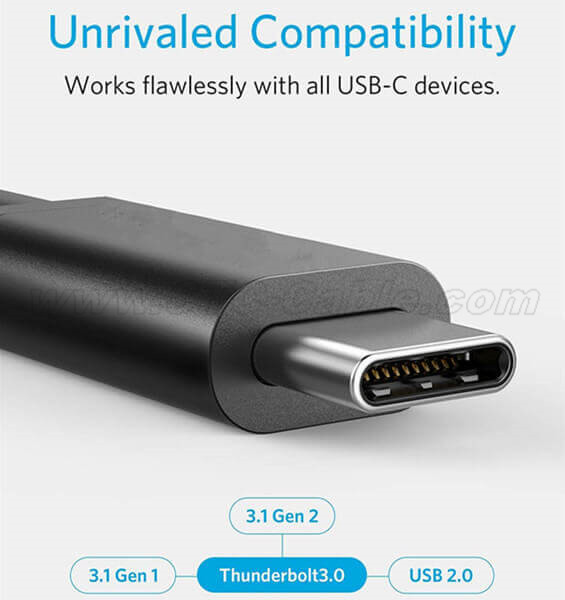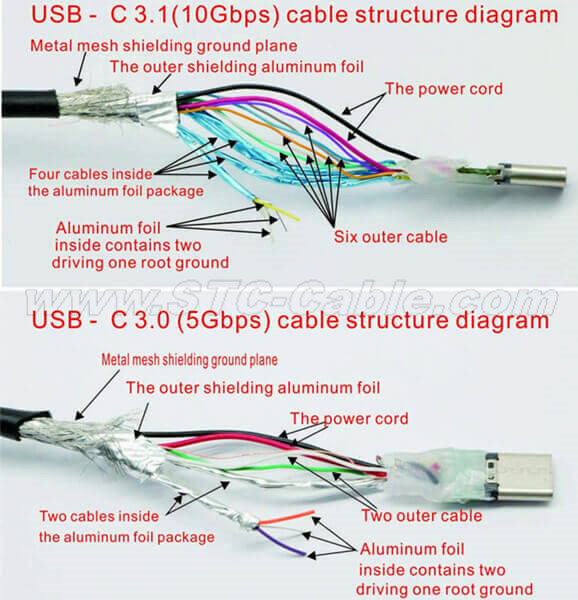STC-CABLE: The Difference Between DP2.0 and DP1.4 Standards
Industry: Consumer Electronics
VESA has announced the upcoming version of DisplayPort, with a substantial number of features and capabilities intended to improve visual quality and allow for increased resolution scaling.
Hong Kong, China (PRUnderground) March 15th, 2021
DP2.0 interface appearance
Thanks to the support of USB-IF, the DP Alt mode can be seamlessly connected with the USB4 specification, so the DP2.0 interface can have two forms, DP and USB Type-C, which means that the DP2.0 interface can be compatible with our common Type -C interface and Thunderbolt 3 interface have the same appearance. In order to distinguish it from the ordinary Type-C interface, DP2.0 will add the DP logo to the interface, just like the Thunder logo next to the Thunderbolt 3 interface, users can more intuitively identify the DP2.0 interface.
Note that although the DP2.0 interface has the same appearance as the Type-C interface and Thunderbolt 3 interface, the three protocols are different and the functions are very different. As for the interface difference between DP2.0 and Type-C and Thunderbolt 3, we will follow There will be a detailed introduction in the chapter.
DP2.0 interface protocol
The DP2.0 protocol supports a maximum resolution of 16K (15360*8460) and an original bandwidth of 80 Gbps, which is 2.5 times the bandwidth of DP1.4; at the same time, DP2.0 uses the latest encoding protocol and the bandwidth utilization rate of the new standard Up to 97%, the peak effective bandwidth is 77.4 Gbps, which is about 3 times the effective bandwidth of DP1.4.
The difference between DP2.0 and DP1.4
The difference between DP2.0 and 1.4 is basically mentioned above, mainly the difference between physical interface and bandwidth capability.
Physical interface: DP2.0 has two physical appearances, DisplayPort and USB Type-C, and DP1.4 is the traditional DisplayPort interface (as shown in the figure above).
Bandwidth capability: DP2.0 bandwidth is 80Gbps, supporting 16K@60Hz, 8K@120Hz and 4K@144Hz; DP1.4 bandwidth is 32.4Gbps, supporting 8K@30Hz and 4K@120Hz.
DP2.0 application
The powerful bandwidth capability of DP2.0 allows it to meet the 8k high-definition resolution without any compression, and even in the short-distance use environment, it can meet the 16K ultra-high resolution of a single display device and three display devices. At the same time, the HDR ultra-clear display mode of 10K@60Hz provides the basis for the high-fidelity display of game animation.
Regarding the application of DP2.0, there are still few 8K video resources and monitors that support resolutions above 8K. However, the management party VESA is promoting the DP2.0 standard. With the development of DP2.0 interface monitors and the improvement of supporting systems, DP2. 0 products are expected to appear in the second half of this year, when STC will also bring DP2.0 standard related accessories to serve everyone.
Is DisplayPort 2.0 backwards compatible?
What does DP 1.2 mean?
Does DisplayPort 1.2 support HDR?
Can DP 1.2 do 144Hz?
About STC Electronic (Hong kong) Co., Limited
Leadership
STC-CABLE is an industry leading manufacturer of high performance cabling and connectivity solutions. Founded in 2008, STC provides end-to-end connectivity solutions serving a variety of markets–including corporate, digital signage, education, healthcare, home theater, and hospitality.
As a professional cable assembly factory, STC brings a complete portfolio of products and solutions including USB 2.0 Cables, USB 3.0 Cables, USB C Cables, Drive Cables, Network Cables & Adapters, Audio & Video Cables, Serial & Parallel Cables, Audio-Video Products, Computer power Cables internal and so on.
Leo Zhang
Sales Manager
hevenz@stcforcable.com
Tel: (86) 134 2285 3610
www.stc-cable.com
STC Electronic (HongKong) Co,.Limite





